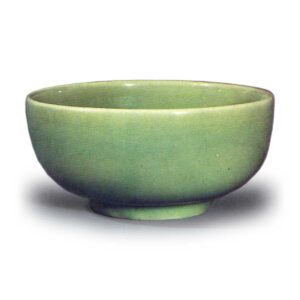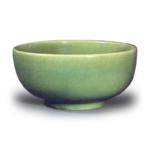
This is a common name in Japan for celadon made at the Longquan kilns in Zhejiang Province, China. Longquan kilns have been producing high-quality powder blue celadon since the Northern Song dynasty (960-1279), and in Japan they are known as Kinuta celadon. The popularity of the Longquan celadon exported from Japan and the rest of the Orient to as far away as Africa and Europe spurred further production. As firing techniques advanced, large works such as huge vases, large incense burners, and large dishes were produced one after another, and by the beginning of the Yuan dynasty, there was even a shortage of fine raw materials. As a result, celadon after the beginning of the Yuan dynasty had a subdued yellowish-green glaze that differed from that of conventional incunctorial celadon in appearance, and was characterized by the shape of a kabukuro (a kind of bamboo with a small arrowhead) and tenryu (a kind of dragon). This type of celadon is called Tenryuji celadon. The name Tenryuji is said to have originated from the fact that these celadon wares were brought to Tenryuji by ship during the Muromachi period (1336-1573), or because the monk Muso Kunishi (according to one theory, Sasahiko) came to Tenryuji and brought these wares to the temple, where peony incense burners were highly praised. In any case, it can be considered as celadon porcelain fired at the Longquan kilns from the Yuan to the early Ming dynasty. The color of Longquan celadon after this period was further reduced and the glass content increased, resulting in a glistening appearance, commonly referred to as “seven official celadon.








